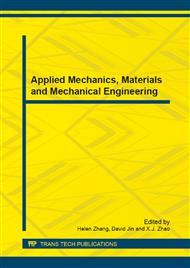p.237
p.241
p.246
p.250
p.254
p.258
p.262
p.267
p.271
Study on Direct Current Controlled Distribution Static Synchronous Compensator with Mechanical Properties Used for Improvement of Voltage Quality
Abstract:
A type of direct current controlled static reactive power compensator (DSTATCOM) used for improvement of voltage quality in low-medium distribution network is introduced. The main circuit of DSTATCOM consists of VSI-SPWM voltage source inverter. The extraction of reference current and the tracking control of compensator current are realized in synchronous reference frame. The function of DSTATCOM to mitigate voltage sag and flicker is presented in this paper and the control mode of DSTATCOM is discussed in detail. The function of DSTATCOM to mitigate voltage sag and flicker under different control mode is simulated with MATLAB. The simulation results shows that the current control mode is suitable for mitigating voltage flicker and the voltage control mode is suitable for mitigating voltage sag.
Info:
Periodical:
Pages:
254-257
Citation:
Online since:
August 2013
Authors:
Price:
Сopyright:
© 2013 Trans Tech Publications Ltd. All Rights Reserved
Share:
Citation:


